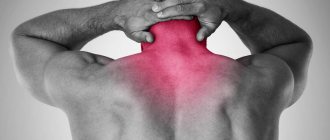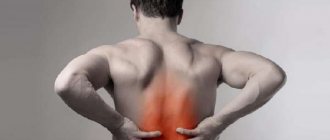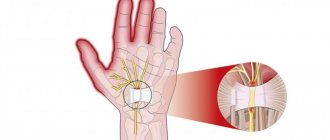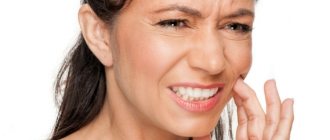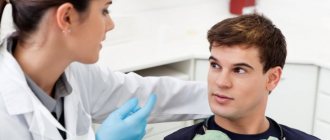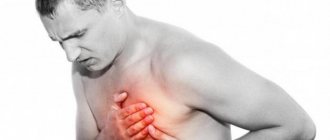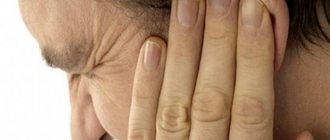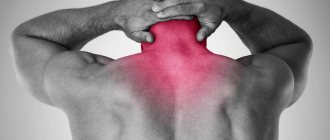Morton's neuralgia (perineural plantar fibrosis) is a disease common throughout the civilized world. It is accompanied by pain caused by unnatural compaction of the nerve of the foot.
Most of the patients are representatives of the fairer sex. This is due to constant walking in long heels. Men are much less likely to go to the clinic with the corresponding symptoms.
The source of the disease is located between the fourth and third toes. Despite this localization, the nerve is partially affected, on one side. Bilateral inflammation is extremely rare.
Provoking factors
Morton's neuroma develops under the influence of certain external and internal factors. Among the most common reasons are the following:
- Overweight . This reason is the most common, since excess pressure is constantly placed on the lower extremities and nerves are regularly compressed, which leads to the development of Morton's neuralgia.
- Injuries and bruises of various types.
- Infectious diseases that have become chronic are also negatively reflected .
- Flat feet . Many people mistakenly believe that this pathology does not entail serious consequences, but it is the initial stage of many serious diseases. Morton's disease is one of them.
- Regularly wearing shoes with long heels . This in turn leads to bone deformation. Nerve inflammation is one of the consequences.
- Tight shoes . When it is constantly worn, compression of the nerve fibers occurs. This may be accompanied by constant pain and neuralgia.
- Foot tumor.
- Leg overload . When standing for a long time, the feet experience unnatural overloads, which lead to many different diseases.
Clinical picture of the disease
Most often, the main changes in the nervous tissue and the surrounding fibrous membrane occur unnoticed, at a subclinical stage. As stated above, one of the first signs is severe pain if you squeeze your fingers crosswise. In addition to this pain, the following unpleasant sensations may occur:
- Paresthesia, “crawling”, numbness, burning sensation and other sensory disturbances in the toes and feet;
- Often there is a sensation of some kind of “knot”, “bump”, or “pebble”, which can be described as a foreign body in the interdigital space.
Morton's neuralgia, the symptoms of which may be remitting in nature, may not attract attention for a long time, and the reason to go to the doctor due to the insignificance of unpleasant sensations may be postponed for a long time. So, for example, there is no pain at rest, but after taking off tight shoes, massaging and rubbing the feet, there is also relief.
Cause of Morton's neuralgia
But with an increase in the volume of fibrous tissue and an increase in neuroma, the light spaces decrease, the pain becomes constant, which, in the end, does not disappear with rest and even barefoot.
Characteristic manifestations
The first stages of the disease are rarely accompanied by significant changes in health status. Unpleasant sensations become noticeable after a few weeks. After the onset of the disease, unpleasant sensations appear when the interdigital area is compressed.
Morton's neuroma is characterized by the following symptoms:
- sharp pain and itching between the fourth and third fingers;
- mild tingling in the toes;
- insurmountable discomfort when walking and running;
- weakening of sensitivity in the area of the fourth and third fingers;
- numbness and swelling of the entire foot;
- sharp pain extending to the fingers or feet.
The described symptoms may subside over time and appear only after a few years. The disease may be dormant, but this does not mean that it has disappeared completely.
Sharp pain occurs only when using long heels. If you wear flat-soled shoes, the pain will immediately subside.
The longer treatment is delayed, the more intense the symptoms. If treatment is delayed too much, the pain will persist, regardless of the shoes used.
Inflammation of the ankle joint: causes, symptoms and treatment
Inflammation of the ankle joint is characterized by severe pain, swelling, redness of the skin, and an increase in the volume of the joint.
Limitations of movement are often observed, up to their complete disappearance. Diagnosis of the condition is carried out through laboratory tests, x-rays, puncture and arthroscopy. Treatment is aimed at the root cause of the disease, and includes an active anti-inflammatory component.
What kind of disease?
The ankle joint is a complex movable joint consisting of the talus, as well as the tibia and fibula. The ankle allows flexion and extension of the foot, allowing a person to take steps or remain in an upright position for a long time.
According to statistics, the most common damage to the ankle joint is inflammation. Thus, the disease occurs in every 10th patient who seeks help from a traumatologist. Moreover, 2/3 of the patients are male.
Inflammation of the ankle joint (arthritis) includes a specific inflammatory reaction in the joint capsule. The exact mechanism of inflammation development is not known today. However, it has been proven that the main role is played by changes in the articular (synovial) membrane, which normally produces liquid “lubrication” of the joint.
The disease is widespread throughout the country and affects patients of all ages, significantly impairing their quality of life. For this reason, pathology is a serious problem among rheumatologists and traumatologists.
Why does it happen?
Among the main causes of inflammation of the ankle joint are:
- chronic joint damage (arthrosis);
- metabolic disorders (gout);
- systemic inflammatory diseases (lupus, ankylosing spondylitis, rheumatism, psoriasis);
- infections (tuberculosis, syphilis, gonorrhea, as well as dysentery or yersiniosis in children);
- traumatic lesions of the joint capsule, cartilage, ligamentous, tendon apparatus or penetrating wounds;
- increased loads on the ankle (during running, jumping, etc.), contributing to constant microtraumas.
Predisposing factors for the development of inflammation of the ankle joint are considered to be: poor nutrition with a deficiency of microelements, bad habits (smoking and drinking alcohol), excess body weight, as well as emotional stress or frequent stressful situations.
Frostbite or prolonged stay in a cold and humid climate (rotation work in the Arctic Circle, etc.) also contributes to arthritis.
In each of these cases, a congenital defect of the immune system plays a special role in the occurrence of inflammation. For this reason, so-called immunological hyperreactivity occurs, i.e. inadequate increased reaction of the body to its various conditions.
Symptoms
Ankle inflammation can be acute or chronic.
Acute form
One of the first symptoms of acute arthritis is severe pain. Typically, pain occurs spontaneously, more often at night or in the morning. At the same time, the strength of the pain syndrome weakens significantly after physical activity.
Due to inflammation of the synovial membrane, the production of intra-articular fluid increases. As a result, the ankle swells - it increases in volume, and the skin above it becomes red and hot. The joint itself takes on a spherical shape.
- Pain, and then severe swelling, significantly limit movements in the ankle, until they disappear completely.
- In the case of infectious inflammation, the patient’s general condition often worsens: body temperature rises (up to 39°C), fever and weakness occur.
Chronic form
This variant of the disease has a staged course. So, at first, patients are bothered by pain while walking or jumping. Over time, pain is observed at rest, and intensifies due to changing weather conditions - meteosensitivity occurs.
In the later stages, the mobility of the joint is significantly limited (due to the growth of connective tissue in its cavity). Later, the foot bends, the ankle becomes deformed and immobilized - ankylosis occurs.
Flow options
Depending on the cause of inflammation, arthritis has some features of its course:
- With rheumatism, periods of exacerbations are observed, symmetrical joints are involved in the process, and the pain syndrome is often constant. If inflammation covers the ligamentous apparatus, joint instability is possible, which is often complicated by subluxations.
- Reactive arthritis has a classic course, but occurs against the background of a previous infection (dysentery, salmonellosis, mycoplasmosis, etc.).
- Reiter's syndrome is a variant of reactive arthritis, combined with inflammation of the mucous membrane of the eyes (conjunctivitis), as well as the urethra (urethritis).
- With gout, arthritis occurs in the form of attacks, most often affecting one or two joints with obligatory damage to the big toe. The inflammation is asymmetrical and is often combined with the formation of dense nodules around the joints - tophi.
- Psoriatic inflammation of the ankle is accompanied by a skin rash in the form of scaly red spots (erythroderma), bumps (plaques), and pus-containing elements (pustules).
Diagnostics
The diagnostic approach is comprehensive, and its goal is to discover the root cause of inflammation of the ankle joint.
Diagnostics include:
- Questioning the patient to determine if inflammation is related to allergies, infection, or injury;
- Inspection of the affected area to determine possible psoriatic plaques, wound sites, etc.;
- Laboratory tests to confirm gout, rheumatism, etc.;
- X-ray to exclude subluxations, arthrosis, etc.;
- Puncture (puncture) of the ankle with collection of joint fluid for the purpose of subsequent study (determination of infectious agents, their sensitivity to antibacterial agents, etc.);
- Arthroscopy is a minor operation involving the introduction of a video camera and micro-instruments into the joint cavity. During the manipulation, a final diagnosis is made, and a biopsy is performed (part of the tissue is removed) of the articular membrane.
Treatment
Treatment of inflammation of the ankle joint consists of eliminating the underlying pathological process. So, for infections, doctors prescribe antibacterial agents (Aminopenicillins, Cephalosporins), for gout - Colchicine in the acute period and Allopurinol as maintenance therapy.
In the case of rheumatism, Bicillin-5 is used, as well as Delagil and Plaquenil. If the patient suffers from psoriasis, the newest drug Apremilast is used, as well as antidepressants and other psychotropic drugs (to eliminate concomitant social phobia and depression).
To reduce pain and severity, clinics prescribe nonspecific (Phenylbutazone, Indomethacin, Etodolac), as well as hormonal (Hydrocortisone, Methylprednisolone) anti-inflammatory drugs. In case of severe pain, painkillers (Analgin, Tramadol) or periarticular blockades with anesthetic (Dexamethasone + Novocaine) are used.
Physiotherapy
Physiotherapeutic procedures include electrophoresis with analgesics, ultraviolet irradiation, paraffin baths, and mud therapy. Patients are recommended a course of massage of the lower extremities, a complex of restorative physical education and sanatorium-resort treatment.
Surgical methods
In case of purulent inflammation, the joint cavity is opened and then washed with antiseptics. Arthritis with a persistent chronic course is treated by excision of the joint capsule - synovectomy. In complex forms associated with significant destruction of the joint, it is restored or replaced (endoprosthetics).
Preventive measures
Prevention of ankle inflammation is based on:
- timely diagnosis of chronic joint damage (arthrosis);
- correction of metabolism (for gout);
- treatment of systemic inflammatory diseases (lupus, ankylosing spondylitis, rheumatism, psoriasis);
- treatment of infections (tuberculosis, syphilis, gonorrhea, as well as dysentery or yersiniosis in children);
- prevention of traumatic joint injuries or penetrating wounds;
- reducing loads on the ankle (when running, jumping, etc.).
Patients are also advised to rationalize their diet, get rid of bad habits and excess body weight, and avoid stress or hypothermia.
https://www.youtube.com/watch?v=B45A1vlSjcQ
According to statistics, 3.1% of disabilities worldwide are due to arthritis. For this reason, ankle inflammation requires early diagnosis and proper treatment!
Source:
Ankle inflammation: ankle treatment
The ankle joint is a part of the body that bears a lot of stress. A healthy ankle provides a person with the ability to move normally - run, walk, drive a car.
Even a minor injury can lead to the development of a serious illness, and inflammation of the ankle joint is a particularly common reason for visiting the doctor.
As a rule, this disease is accompanied by pain, swelling and impaired mobility of the leg.
Causes of ankle inflammation
There are many factors leading to inflammation. Here are the main reasons why the ankle becomes inflamed:
- Allergic reactions, due to which tissues can become deformed.
- Bacterial or viral infection. A few weeks after the appearance of the infectious focus, the patient experiences inflammation.
- Diseases that adversely affect metabolism.
- Dislocations, fractures, bruises. Due to injuries, synovial fluid begins to be produced in smaller quantities, which leads to an exacerbation of the pathology.
- Flat feet. Deformation of the foot leads to a shift in the center of gravity, therefore, the load on the ankle joint increases.
- Diabetes.
- Endocrine disorders.
It is necessary to accurately establish the cause that led to inflammation, then the effectiveness of therapy will be high.
Symptoms of the disease
Inflammation of the ankle joint develops over a short period of time. The symptoms of this disease are clearly expressed, and this is a kind of “advantage” of the pathology - it is easy to recognize .
Typical signs:
- Painful sensations in the ankle area. The aching pain intensifies during movement, especially when running or going up or down stairs. The pain syndrome can be periodic or permanent, often the pain does not leave the patient even at rest;
- Violation of normal mobility;
- Swelling and redness of the skin in the area of the affected joint and periarticular tissues with a concomitant increase in local temperature;
- Increased body temperature accompanied by general weakness, fatigue, and possibly fever.
It is worth noting that sometimes the pathological process proceeds slowly. The disease does not have to become acute for the ankle ligaments to be seriously damaged. The very first symptoms of inflammation are an unambiguous signal: “It’s time to see a doctor.”
Principles of Ankle Treatment
When the ankle ligaments become inflamed, the first priority is to relieve the patient of pain. Movement should be limited and the affected limb should be at rest.
The best option is bed rest. If the patient is unable to stay in bed, it is recommended to use a bandage and move with a cane.
Shoes and insoles must ensure that the foot is held in a stationary position.
Source: https://cmiac.ru/preparaty/vospalenie-golenostopnogo-sustava-prichiny-simptomy-i-lechenie.html
Establishing diagnosis
Diagnostic procedures are prescribed by a doctor if the patient presents with relevant complaints.
The doctor examines the patient and interviews him. In the process of collecting an anamnesis, it becomes clear what type of shoes the patient or patient prefers to wear, with what frequency the load is placed on the legs, whether there have been inflammations of the extremities before, and information about all kinds of injuries and bruises is clarified.
After analyzing the survey results, the attending physician prescribes the necessary procedures.
To verify the correctness of the established diagnosis, a medical professional examines the feet. It involves a detailed examination of places where pain reaches a critical level.
If the doctor is not convinced of the presence of neuralgia, then he prescribes magnetic resonance imaging or x-rays.
Anesthesia is used to detect the source of the disease. It freezes the foot, but maintains tactile perception in the affected areas.
The main problem is the difficulty of diagnosing Morton's neuroma, since the main symptoms are similar to other foot diseases.
Treatment
An important place in the treatment of neuralgia is occupied by pain relief. In the initial stage of the disease, drugs are used that block skin nerve receptors and distracting agents - ointments and emulsions containing local analgesics, snake and bee venom, novocaine blockades, thermal procedures.
Significant relief comes from ingesting painkillers prescribed by a doctor in tablets, injections or suppositories, large doses of B vitamins, UHF, dynamic currents, magnetic therapy, electrophoresis and phonophoresis with the introduction of medicinal substances through the skin, massage, and acupuncture. In some cases, they resort to homeopathic treatment, psychotherapy, and use electrosleep.
Complex of medical procedures
There are two different approaches to treating plantar fibrosis. The choice of method depends on the neglect and complexity of a particular case.
Conservative treatment
The main point is the refusal of surgical intervention.
First of all, it is planned to significantly reduce the load on the feet and make their work easier. This approach is appropriate at the initial stages of the disease. If the help of a competent specialist was not received on time, then surgery becomes the only and mandatory way to solve the problem.
If the operation is impossible or undesirable for a number of reasons, then it is recommended to resort to conservative methods, which include the following set of procedures:
- use of comfortable shoes with soles without heels;
- wearing specialized orthopedic insoles;
- the use of devices that separate the fingers, which will eliminate the possibility of deformation of the fingers and foot as a whole;
- eliminating stress on the feet, so it is necessary to minimize the time spent in a standing position;
- It is recommended to use orthopedic shoes that correct the surface of the foot in accordance with individual characteristics;
- regular foot massage.
If you use this complex, the pain syndrome will disappear in a few months. Often conservative methods do not have the desired effect and the pain becomes more intense. In this case, it is advisable to use painkillers.
The following drugs are used to suppress pain:
- Codelac;
- Terpincode;
- Nimesulide;
- Solpadeine;
- Diclofenac.
Among the advantages of a conservative approach to the treatment of Morton's neuroma, it is worth highlighting:
- no recovery period;
- painful sensations that are typical in the postoperative period are excluded;
- treatment is carried out without disturbing the usual schedule, there is no need to change the existing rhythm of life, since there is no need to regularly visit the attending physician.
Among the disadvantages it is worth noting the following:
- duration of treatment;
- this method requires large financial investments in comparison with surgical ones;
- side effects from the use of various medications are possible, the functioning of the digestive tract and cardiovascular system is disrupted;
- the most important disadvantage is that there is no guarantee that the therapy will be successful.
Surgical approach
The operation is performed if conservative measures do not bring the desired result.
Three intervention techniques are used:
- normal removal;
- artificially performed bone fracture;
- removal of the inflamed area of the nerve and part of the muscle.
Among the advantages of prompt resolution, the following should be noted:
- low cash costs;
- efficiency;
Flaws:
- long recovery;
- At first there will be discomfort while walking.
If treatment is not started in a timely manner, the pain may intensify and the inflammation may spread even further. In the final stages, surgery is a mandatory aspect of treatment.
Ankle inflammation - symptoms, signs and treatments
Arthritis of the ankle joint is a disease caused by an imbalance in the proportion of load on the joint and the stability of its components.
When the first signs of this disease appear, you must immediately consult a doctor to establish the correct diagnosis and prescribe effective treatment.
The inflammatory process develops quite rapidly, motor activity is gradually limited, lifestyle is disrupted, temporary disability occurs, and in some cases even disability.
Main reasons
There are many factors that provoke the disease.
- Joint injuries - fracture, bruise, dislocation. There is a decrease in the production of synovial fluid, which causes a pathological process.
- The appearance of an infectious focus in the body. Inflammation occurs several weeks after the first signs of a bacterial or viral infection appear.
- Flat feet, leading to a change in the center of gravity and increased load on the joint area.
- Diseases accompanied by metabolic disorders.
- Allergic reactions that cause tissue deformation.
- Diabetes mellitus.
- Endocrine system disorders.
The effectiveness of treatment largely depends on establishing the exact cause of the inflamed joints.
Classification and types of ankle arthritis
Ankle arthritis is divided into the following types:
- Rheumatoid arthritis. Develops due to the patient's hereditary predisposition. It is a systemic disease that is located in the ankle joint.
- Periarthritis. Characterized by inflammation of the tissues surrounding the joint. The disease is characterized by high pain and limited motor activity of the joint.
- Traumatic arthritis. Develops due to injuries: sprains, ruptures of articular ligaments, bruises, dislocations, subluxations. When injured, a certain amount of blood enters the joint cavity, which causes non-purulent inflammation. With an open injury, when bacteria and microbes enter the wound cavity, purulent (septic) arthritis of the ankle develops.
- Gouty arthritis. Develops as a result of metabolic disorders. For example, when purine metabolism is disrupted, excessive formation of uric acid occurs, which is not completely eliminated from the body and accumulates in the form of sodium urate in the joints. This occurs due to the abuse of meat products and alcohol, which contain large amounts of purines.
- Reactive arthritis. Occurs as a result of an infection (nasopharyngeal, urogenital and intestinal). It debuts violently with high fever, swelling and redness of the joint.
- Post-traumatic arthritis. It has the same etiology as traumatic arthritis. However, post-traumatic arthritis develops several years after the injury. With mechanical damage to the joint capsule, its cartilage, tendons and ligaments, minor damage remains, which over time turns into arthritis. This type of arthritis is more often observed in athletes and lovers of high heels.
How inflammation manifests itself
Symptoms of ankle inflammation develop very quickly and are well expressed. Thanks to this, it is quite easy to identify it.
- The appearance of aching pain in the ankle area, intensifying during movement (especially when running,
going up or down stairs). It may be constant or occur periodically. It is often felt even during periods of rest. - Redness and swelling of the ankle joint and adjacent tissues, severe hyperthermia.
- Increased body temperature, fever, general weakness, fatigue.
- Impaired joint mobility.
In some cases, the inflammatory process develops slowly, however, damage to the ankle ligaments can be no less serious than in the acute form of the disease. Therefore, upon discovering the first symptoms that the joint is beginning to become inflamed, you need to see a doctor.
Prognosis, complications
Arthritis is a conditionally unfavorable disease, since it cannot be completely cured. Treatment can only slow down the progression of the disease and reduce the risk of various complications.
Without timely and complete therapy, the patient will face the following consequences:
- complete destruction of the cartilaginous membrane of the ankle joint (within 2 years);
- deformation of the joint shape;
- loss of joint mobility;
- formation of gait defects;
- development of muscle atrophy;
- the joint fragments fuse completely, which leads to disability.
At the last stage of arthritis, the patient can move only with the help of special devices - crutches, canes. Due to pronounced symptoms, the quality of life is significantly reduced and productivity is lost.
What happens in the joint
If your leg hurts in the joint area, it can be difficult to understand what causes this phenomenon. It is worth considering the processes occurring inside the joint depending on the stage of development of the pathology. There are 4 stages in total:
- Collagen fibers grow inside. The process is stimulated by autoimmune disorders or age-related changes;
- Due to increasing pressure, tissue destruction accelerates. Rapid cell division promotes the formation of nodules;
- Osteophytes appear and friction between bones increases. Exudate accumulates, the joint begins to deform;
- The cartilage tissue is completely destroyed. The fusion of fibers and then bones begins. The patient becomes disabled.
Read also: Ointment for rheumatism of joints It is impossible to accurately determine arthritis of the ankle joint and its stage with the naked eye. A number of diagnostic procedures are required.
General principles of treatment
The first thing you need to do when you have inflammation of the ankle ligaments is to relieve the unpleasant painful symptoms. To do this, it is important to ensure peace by limiting movement.
The best option would be bed rest. If this is not possible, it is recommended to use special bandages or a cane when moving.
It is necessary to choose shoes and insoles that will ensure maximum joint immobility.
The next step is the use of anti-inflammatory drugs . If the inflammation is infectious, antibiotics are prescribed, used orally or by injection. Restoration of cartilage tissue is ensured by chondoprotectors. A mandatory component of the therapeutic course are drugs that strengthen the immune system and vitamin and mineral complexes.
External agents are applied to the affected area after the symptoms of hyperthermia have been eliminated. Ointments and gels applied as a compress quickly relieve swelling.
You can eliminate pain and tension in the ankle and reduce inflammation of the tendons by reducing body weight . Therefore, diet and proper nutrition play a significant role in the treatment of such pathologies.
The effectiveness of treatment increases markedly, and recovery occurs much faster when drug therapy is combined with physiotherapeutic procedures, therapeutic exercises, and massage.
Sanatorium-resort treatment helps to finally consolidate the effect. With inflammation of the ankle joint, the causes and treatment are closely interrelated.
Therefore, the therapeutic course is proposed taking into account the pathologies that caused the inflammation.
How does a person feel before an attack develops?
Signs of occipital neuralgia indicate the appearance of extensive inflammation. The main symptom is pain localized in the back of the head. With neuralgia, the pathological process involves the meninges, cervical spine, muscles and skin. Often, adult patients experience paroxysms that last a long time. Inflammation of the intervertebral joints causes neuralgia - signs of disc pathology are clearly expressed. The acute form of the disease is characterized by the development of a crisis.
In older people, damage to the trigeminal nerve occurs due to caries, sinusitis, tumor of the cranial fossa, and herpetic infection. The manifestation of neuralgia is a sudden onset attack, for example, after touching the skin of the face or blowing wind. If pain radiates to the ear, inflammation of the glossopharyngeal nerve is suspected.
Main reasons
In order for a doctor to make an accurate diagnosis and prescribe effective treatment, it is necessary to undergo several tests and studies.
There are several pathologies accompanied by numbness of the toes.
Fibromyalgia
This is a disease that is characterized by pain throughout the body. Its intensity depends on weather conditions. Symptoms may worsen if it is cold or wet outside, or if there is stress or anxiety. The syndrome affects women more often; experts have not yet fully determined the exact cause.
Multiple sclerosis
This is an autoimmune disease localized in the spinal cord or brain.
Herniated disc
Along with numbness in the toes comes a tingling sensation. The disease develops after heavy physical exertion on the back or spine. Not only do the toes go numb, the patient feels weakness in the arms, as well as in the lower back.
Vitamin B12 deficiency
This is a disease that is accompanied by weakness, loss of balance, numbness in the arms and legs. Although the element is found in animal products, older people may have problems absorbing this vitamin.
Pathological changes associated with peripheral nerves
Sources of disturbances include tobacco, lead, and alcohol, as a result of which signals are not sent to the brain. Colic appears all over the body. The provoking factor of this problem can be physical trauma, impaired metabolism, as well as systematic diseases.
Diabetes
Nerve damage occurs in the context of elevated sugar levels and decreased blood flow, causing numbness in the toes. Accompanying symptoms are rapid heartbeat, increased sweating, sexual problems, as well as tingling and burning of the hands.
Carpal tunnel syndrome
In medicine, this disease is defined as tibial nerve dysfunction. Along with numbness in the toes, other symptoms also occur. The source of the problem is injury or direct pressure on the tibial nerve.
Peripheral heart disease
The arteries narrow, blood flow slows down, so nerves and tissues are damaged. A person feels his toes go numb when moving or during physical activity. Along with this symptom, fatigue, burning, and muscle discomfort occur.
On this topic
- Numbness
5 facts about numbness in fingers
- Natalia Sergeevna Pershina
- May 23, 2020
There are certain factors that lead to numbness of the big toe of the right or left foot. These include:
- impaired blood circulation in the legs;
- uncomfortable shoes;
- nerve compression;
- gout;
- diabetes;
- inflammation of the bone;
- bursitis;
- radiculitis;
- Raynaud's disease;
- cervical spondylosis.
In any case, characteristic symptoms appear and you should consult a doctor. He will order tests, make an accurate diagnosis, and prescribe effective treatment. The patient will feel symptoms of the underlying disease, which is accompanied by numbness in the toes. The severity of the symptoms will depend on the stage of development of the pathology.
The problem is obvious
Symptoms of neuralgia of the pterygopalatine ganglion appear within a few hours. Then the attack ends. Characteristic is regression of pain after the cessation of the stimulus. With neuralgia, the patient experiences discomfort in the upper jaw, spreading to the soft palate.
The cause of the disease is an inflammatory process in the oral cavity, a fracture of the zygomatic bone, alcohol consumption, stress, and a malignant tumor. Often during an attack, contraction of the muscle bundles of the soft palate is observed, and a characteristic clicking sound occurs.
In some cases, a neuralgic attack is accompanied by autonomic disorders. The patient complains of redness of the mucous membrane of the eyes, lacrimation, and swelling of the face. A small amount of clear mucus is discharged from the nose. The development of acute attacks of neuralgia is typical - the symptoms of the disease intensify at night, accompanied by psychomotor agitation and motor restlessness.
Morton's syndrome
The disease is characterized by damage to the plantar nerves. The patient complains of discomfort in the foot. At the onset of the disease, he is forced to take off his shoes and massage his muscles to alleviate the condition. In many cases, the attack begins at night. Paroxysms reach their peak after a few hours, the sciatic nerve becomes inflamed.
Sharp pain may appear in the area of the affected nerve trunk. The patient has increased sensitivity in the fingertips. During therapy, the peculiarities of this type of neuralgia should be taken into account - the disease is difficult to treat due to permanent injury to the nerve trunks. The accepted standard for relief from excruciating pain involves the use of analgesics and diuretics.
During an attack, the patient tries to retire and complains of a feeling of fullness in the foot. In this case, establishing the degree of nerve damage allows you to choose effective therapy. Surgical treatment is of no small importance to prevent further development of the disease.
Pain points
The localization of pain depends on the location of the nerve damage - in the cervical, thoracic or lumbar spine. In elderly or obese young people, neuralgic pain may occur along the anterolateral surface of the chest, which is a consequence of compression of the microvessels in the posterior part of the chest. In such cases, you should pay special attention to the appearance of pain, since acute diseases of the heart and its blood vessels can also occur under the guise of neuralgia.
Intercostal neuralgia can be associated both with damage to the thoracic spine and with problems of internal organs and blood vessels. In this case, the pain is often worsened by coughing, heavy breathing, or other chest movements. Neuralgia of the external cutaneous nerve of the thigh is also common.
Therapy for inflammation of the trigeminal nerve
For treatment, a medicine from the group of anticonvulsants is used - Finlepsin. Its dose is increased gradually, and the effect of therapy is observed within a few days. The drugs of choice for treatment are the following anticonvulsants:
“Complete healing of joints and back for 1 RUBLE!”
A federal program to rid the population of musculoskeletal diseases has been launched! It's hard to believe, but an effective drug is funded by the Ministry of Health. Scary statistics show that banal crunching and pain in the joints often result in disability! To avoid this you need to take a cheap remedy...
- Difenin;
- Morpholep;
- Ethosuxemide;
- Trimethine;
- Clonazepam.
In combination with Finlepsin, vasodilators and diuretics are effective:
- A nicotinic acid;
- Furosemide.
When other medications fail, the following nootropics are used:
- Aminolon;
- Cavinton;
- Trental;
- Piracetam.
The diagnosis in typical cases is simply simple. However, the doctor is obliged to exclude the possibility of the appearance of secondary forms of inflammation of the trigeminal nerve. This task is relevant if bilateral neuralgia develops - symptoms and treatment are carried out according to the traditional scheme, taking into account the degree of damage.
In some cases, surgery may be prescribed. Microvascular decompression and destruction of nerve roots using electric current are very effective. The consequences of the tumor are also removed surgically, achieving complete elimination of pain.
Treating neuralgia with recipes that people have used in the past has yielded positive results. An alcohol tincture of wild rosemary shoots helps relieve an attack. Rub the sore spot at night, using the product until the discomfort completely disappears.
Treatment of neuralgia with the leaves of indoor geranium (pelargonium) can reduce painful sensations. It is necessary to apply the raw material to an area of the skin where pain can be very severe.
During therapy, you can take medications based on medicinal plants that have anti-inflammatory and restorative effects. It is useful to drink a decoction of the herb St. John's wort, black elderberry flowers and birch buds. Quick relief can come from consuming a mixture that contains the following plants:
- fireweed leaves;
- oregano herb;
- linden flowers.
Traditional healers know whether it is possible to reduce pain by rubbing the inflamed area with herbal alcohol tinctures. Therefore, preparations made from montana arnica flowers and eucalyptus leaves are very popular. After completing the procedure, the affected area must be covered with a warm woolen scarf.
How to relieve a migraine attack
Treatment of neuralgia, accompanied by the appearance of a “cluster” headache, involves influencing the cause of the disease. For therapy, the doctor suggests the medicine Mexiletine, which eliminates discomfort and has an analgesic effect. This type of neuralgia can be cured using the following medications:
- Amitriptyline;
- Diazepam;
- Chimes.
How to treat neuralgia if attacks occur frequently, the doctor will tell you after examining the patient. For the treatment of acute conditions, drugs are used:
- Ergotamine;
- Caffeine;
- Seduxen;
- Pipolfen.
In severe cases, the patient is recommended to use the drug Dexamethasone to relieve an attack. The drug has anti-inflammatory activity. It eliminates pathological reactions in neuralgia - treatment is aimed at suppressing unwanted immune processes.
Often, glucocorticoid drugs used to relieve neuralgia cause side effects.
Source: yukan.ru
How does a person feel before an attack develops?
Signs of occipital neuralgia indicate the appearance of extensive inflammation. The main symptom is pain localized in the back of the head. With neuralgia, the pathological process involves the meninges, cervical spine, muscles and skin. Often, adult patients experience paroxysms that last a long time. Inflammation of the intervertebral joints causes neuralgia - signs of disc pathology are clearly expressed. The acute form of the disease is characterized by the development of a crisis.
In older people, damage to the trigeminal nerve occurs due to caries, sinusitis, tumor of the cranial fossa, and herpetic infection. The manifestation of neuralgia is a sudden onset attack, for example, after touching the skin of the face or blowing wind. If pain radiates to the ear, inflammation of the glossopharyngeal nerve is suspected.
The problem is obvious
Symptoms of neuralgia of the pterygopalatine ganglion appear within a few hours. Then the attack ends. Characteristic is regression of pain after the cessation of the stimulus. With neuralgia, the patient experiences discomfort in the upper jaw, spreading to the soft palate.
The cause of the disease is an inflammatory process in the oral cavity, a fracture of the zygomatic bone, alcohol consumption, stress, and a malignant tumor. Often during an attack, contraction of the muscle bundles of the soft palate is observed, and a characteristic clicking sound occurs.
In some cases, a neuralgic attack is accompanied by autonomic disorders. The patient complains of redness of the mucous membrane of the eyes, lacrimation, and swelling of the face. A small amount of clear mucus is discharged from the nose. The development of acute attacks of neuralgia is typical - the symptoms of the disease intensify at night, accompanied by psychomotor agitation and motor restlessness.
Morton's syndrome
The disease is characterized by damage to the plantar nerves. The patient complains of discomfort in the foot. At the onset of the disease, he is forced to take off his shoes and massage his muscles to alleviate the condition. In many cases, the attack begins at night. Paroxysms reach their peak after a few hours, the sciatic nerve becomes inflamed.
Sharp pain may appear in the area of the affected nerve trunk. The patient has increased sensitivity in the fingertips. During therapy, the peculiarities of this type of neuralgia should be taken into account - the disease is difficult to treat due to permanent injury to the nerve trunks. The accepted standard for relief from excruciating pain involves the use of analgesics and diuretics.
During an attack, the patient tries to retire and complains of a feeling of fullness in the foot. In this case, establishing the degree of nerve damage allows you to choose effective therapy. Surgical treatment is of no small importance to prevent further development of the disease.
Symptoms
Signs of a problem can change the intensity of manifestation as a person moves and turns his body. Often patients have to take unnatural positions in which the discomfort subsides. The nature of the attacks is varied - from burning, shooting to dull aching. Sometimes the problem is accompanied by constant pain.
The clinical picture of the pathology largely depends on the location of the affected nerve. Therefore, you should consider in detail the signs of each type of neuralgia.
Intercostal neuralgia
Spasms during intercostal neuralgia spread from the thoracic spine along the surfaces of the chest. The problem is characterized by girdle pain. When coughing, moving, turning the body, a person feels acute unbearable attacks. When you press your fingers into the intercostal space, pain is also felt.
Symptoms of pathology may disappear and appear with even greater intensity. Sometimes a slight tingling sensation is felt in the area of the affected nerve.
When the nerves of the lower ribs are damaged, signs characteristic of renal colic are observed. In such a situation, you should immediately consult a doctor for timely diagnosis and treatment.
Sciatic nerve damage
The sciatic nerve runs in the buttock and back of the thigh. A common cause of damage to these areas is pathology of the spinal column. The disease occurs due to increased physical activity, hypothermia, and less often due to damage to the pelvis and malignant tumors.
On this topic
With neuralgia of the sciatic nerve, the following clinical picture is observed:
- Spasms that occur unilaterally.
- Numbness of the legs.
- Pain localized in the lower back, buttocks, and back of the thigh.
The discomfort with this type of disease is constant, pulling and burning. They are periodically replaced by “lumbago”. Spasms occur when a person changes body position.
Neuralgia of the cutaneous nerve of the thigh
Unpleasant signs with this type of pathology spread along the outer sides of the limbs. The attacks intensify when walking and are accompanied by a “lumbago” sensation and a sensation of goosebumps.
Trigeminal nerve damage
Signs of the disease are especially acute during the daytime. The onset of discomfort may be gradual or acute. The trigeminal nerve has three branches, most often the lesion involves one of the branches. Symptoms develop in the forehead, upper or lower jaw. The pathology has several characteristic features:
- Only one half of the face is affected, and only in rare cases is bilateral neuralgia noted.
- The pain is of high intensity.
- The onset of attacks is noted after talking or eating food.
- Symptoms of the disease are accompanied by twitching of the muscles on the face, loss of sensitivity in the innervation of the nerve.
- The duration of attacks does not exceed 2 minutes.
Therapy for inflammation of the trigeminal nerve
For treatment, a medicine from the group of anticonvulsants is used - Finlepsin. Its dose is increased gradually, and the effect of therapy is observed within a few days. The drugs of choice for treatment are the following anticonvulsants:
“Complete healing of joints and back for 1 RUBLE!”
A federal program to rid the population of musculoskeletal diseases has been launched! It's hard to believe, but an effective drug is funded by the Ministry of Health. Scary statistics show that banal crunching and pain in the joints often result in disability! To avoid this you need to take a cheap remedy...
- Difenin;
- Morpholep;
- Ethosuxemide;
- Trimethine;
- Clonazepam.
In combination with Finlepsin, vasodilators and diuretics are effective:
- A nicotinic acid;
- Furosemide.
When other medications fail, the following nootropics are used:
- Aminolon;
- Cavinton;
- Trental;
- Piracetam.
The diagnosis in typical cases is simply simple. However, the doctor is obliged to exclude the possibility of the appearance of secondary forms of inflammation of the trigeminal nerve. This task is relevant if bilateral neuralgia develops - symptoms and treatment are carried out according to the traditional scheme, taking into account the degree of damage.
In some cases, surgery may be prescribed. Microvascular decompression and destruction of nerve roots using electric current are very effective. The consequences of the tumor are also removed surgically, achieving complete elimination of pain.
Treating neuralgia with recipes that people have used in the past has yielded positive results. An alcohol tincture of wild rosemary shoots helps relieve an attack. Rub the sore spot at night, using the product until the discomfort completely disappears.
Treatment of neuralgia with the leaves of indoor geranium (pelargonium) can reduce painful sensations. It is necessary to apply the raw material to an area of the skin where pain can be very severe.
During therapy, you can take medications based on medicinal plants that have anti-inflammatory and restorative effects. It is useful to drink a decoction of the herb St. John's wort, black elderberry flowers and birch buds. Quick relief can come from consuming a mixture that contains the following plants:
- fireweed leaves;
- oregano herb;
- linden flowers.
Traditional healers know whether it is possible to reduce pain by rubbing the inflamed area with herbal alcohol tinctures. Therefore, preparations made from montana arnica flowers and eucalyptus leaves are very popular. After completing the procedure, the affected area must be covered with a warm woolen scarf.


